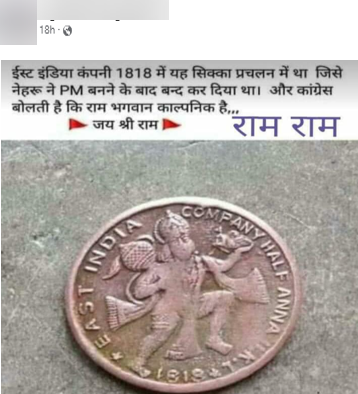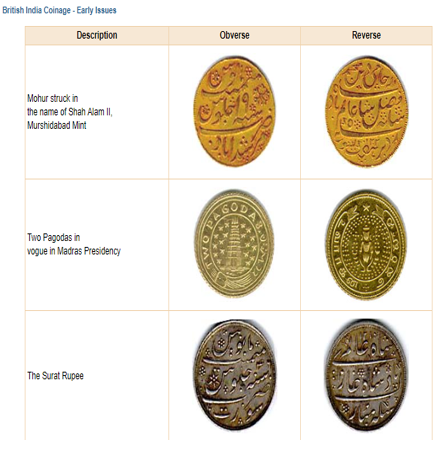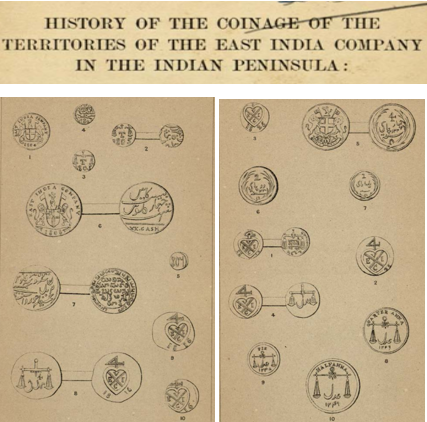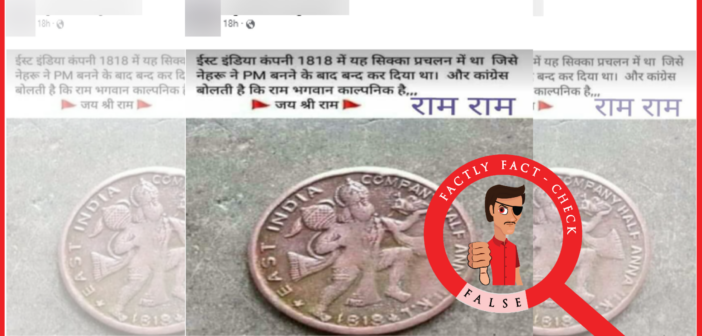A photo of the purported coin of Hanuman from 1818 is being shared on social media claiming that the coin was issued by The East India Company in 1818 and that its circulation was stopped by Nehru after becoming Prime Minister. Let’s verify the claim made in the post.

Claim: A photo of a purported 1818 Hanuman coin issued by the British East India Company. Its circulation was later stopped by Jawaharlal Nehru after becoming Prime Minister.
Fact: There is no record of the East India Company minting Hanuman coins. This depicted coin is likely counterfeit, falling into categories such as Temple Tokens or Lebbo coins. No credible sources confirm Jawaharlal Nehru ceasing the circulation of any coin of this kind. Hence, the claim made in the post is FALSE.
On performing a keyword search, we did not find any credible source confirming that Jawahar Lal Nehru ceased the circulation of the coin featuring Hanuman. Besides, coins that are considered legal tender in India can be found on the Reserve Bank of India (RBI) website. However, the coin featuring an engraving of Hanuman is not listed on the website. Even in the museum section of the RBI’s website, the coins from the British Era do not resemble the one depicted in the viral claim.

According to the information available on the website about the history of British coins, in 1717, the British obtained permission from the Mughal Emperor Farrukhsiyar to mint coins at the Bombay Mint, and the English pattern coins were minted there. Though the minting of coins was permitted in 1717, the British authorities legislated for coinage only in 1835 through the Coinage Act, of 1835.
The Archaeological Survey of India of the Government of India has a document discussing the coin history in regions controlled by the East India Company in India. The pictures in the document don’t show any coins depicting Hindu gods, contrary to the claim.

Further, CoinQuest mentions that while these items carry valid denominations like anna and rupee and seem to be issued by recognized authorities like the East India Company, they are not conventional coins and are not issued by East India Company. Instead, these are counterfeit coins that fall into categories such as Temple Tokens or Lebbo coins, having religious or magical significance rather than being legally recognized tender.

To sum up, there is no evidence indicating that this purported Hanuman coin was published by the British and discontinued by Nehru.



